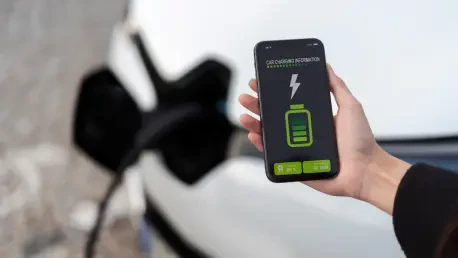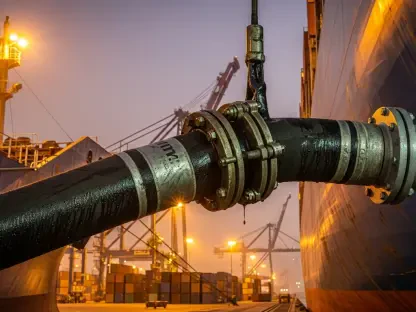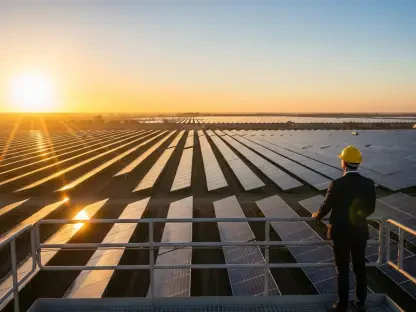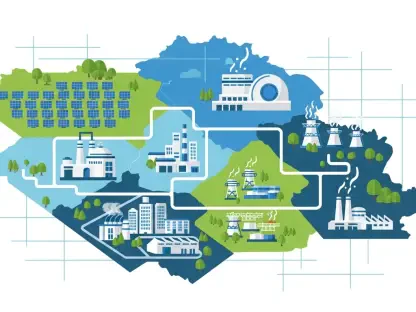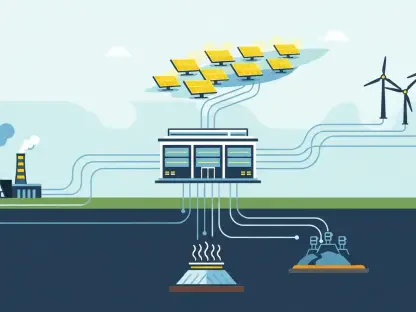Setting the Stage for a Clean Energy Revolution
In the heart of Michigan, a seismic shift is unfolding within the electric vehicle (EV) industry as Tesla Inc. forges a groundbreaking $4.3 billion partnership with LG Energy Solution to produce lithium iron phosphate (LFP) batteries on American soil. This move, emblematic of a broader trend toward reshoring critical manufacturing, signals a departure from reliance on foreign supply chains and raises a pivotal question for investors: how will this reshape the landscape of exchange-traded funds (ETFs) tied to clean energy and manufacturing? With global EV demand surging and geopolitical tensions simmering, Tesla’s strategic pivot offers a lens into the evolving dynamics of investment opportunities.
The clean energy sector stands at a crossroads, balancing rapid technological advancements with complex supply chain challenges. ETFs, as vehicles for capturing growth in this space, are directly influenced by corporate decisions like Tesla’s, which prioritize domestic production over traditional dependencies. This industry report delves into the implications of such a shift, exploring how it reverberates through ETF portfolios and alters investor sentiment in a market hungry for sustainable growth.
Understanding Tesla’s Battery Production Pivot
Tesla’s decision to localize battery production through a massive deal with LG Energy Solution in Michigan marks a significant departure from past practices. This $4.3 billion agreement focuses on manufacturing LFP batteries, a critical component for EVs, directly on U.S. soil. The move underscores a deliberate strategy to build resilience against supply chain disruptions and aligns with broader industry efforts to secure stable, local sources for key materials.
A notable aspect of this pivot is the reduced dependence on Chinese suppliers such as CATL, a former cornerstone of Tesla’s battery supply. By steering away from these partnerships, Tesla is responding to global EV supply chain vulnerabilities exposed in recent years. This shift also reflects a calculated response to clean energy trends that prioritize sustainability and regional self-sufficiency over cost-driven outsourcing.
Geopolitically, the decision carries weight as it positions Tesla to navigate trade uncertainties and potential restrictions on foreign goods. By aligning with a South Korean partner like LG Energy Solution for production in the U.S., Tesla mitigates risks tied to international tensions while tapping into a growing appetite for domestically produced clean tech. This strategic realignment sets a precedent that could influence other industry players and reshape investment priorities.
Impact on ETF Investment Landscapes
Winners in the ETF Space
Tesla’s push for domestic battery production is creating a ripple effect, benefiting U.S.-focused clean energy and manufacturing ETFs. Funds like the iShares U.S. Clean Energy ETF (ICLN) are well-positioned to attract investor interest as they capture the upside of increased domestic activity. Supportive policies, such as tax credits under the Inflation Reduction Act, further bolster confidence in these ETFs by incentivizing onshore manufacturing and sustainable innovation.
South Korean and global clean tech ETFs also stand to gain from this development, given LG Energy Solution’s central role in the partnership. The KraneShares Electric Vehicles and Future Mobility ETF (KARS), for instance, could see heightened inflows as South Korean battery manufacturers solidify their standing in the global EV ecosystem. This trend highlights the interconnected nature of international clean tech investments and the potential for diversified funds to capitalize on regional strengths.
Beyond direct beneficiaries, complementary sectors such as smart grid infrastructure are also poised for indirect gains. ETFs tracking related themes may experience a surge in attention as Tesla’s enhanced U.S. presence drives demand for supporting technologies. This broader impact underscores how a single corporate decision can catalyze growth across multiple investment categories within the clean energy sphere.
Challenges for China-Focused ETFs
On the flip side, Tesla’s reduced reliance on Chinese suppliers poses headwinds for ETFs heavily weighted toward China’s clean energy market. Funds like the KraneShares MSCI China Clean Technology Index ETF (KGRN) may encounter volatility as investor sentiment shifts away from Chinese battery and EV stocks. This reorientation reflects a growing preference for portfolios with lower exposure to geopolitical risks tied to U.S.-China trade dynamics.
The potential for underperformance in these ETFs is compounded by broader market concerns over trade policies and supply chain dependencies. Investors are increasingly reevaluating holdings, favoring funds that offer stability through diversified or U.S.-centric exposure. This trend could lead to a notable outflow from China-focused ETFs in the near term as portfolios are recalibrated to align with emerging realities.
While not all China-linked funds will face immediate downturns, the overarching narrative suggests a period of adjustment. Market participants are likely to monitor how other EV giants respond to similar supply chain pressures, which could further influence the trajectory of these ETFs. This uncertainty serves as a reminder of the intricate balance between regional focus and global investment strategies.
Challenges in Supply Chain and Market Dynamics
Reshoring battery production, while strategically sound, is not without significant hurdles for Tesla and the broader industry. Technological challenges, such as adapting manufacturing processes to new environments, pose risks to efficiency and output. Additionally, the cost implications of domestic production may strain margins in the short term, raising questions about scalability and competitiveness against established foreign suppliers.
Logistical complexities further complicate this transition, as building a robust local supply chain requires coordination across multiple stakeholders. Delays or disruptions in sourcing raw materials domestically could hinder timelines and impact production targets. These operational risks contribute to a cautious outlook among investors tracking the EV sector’s evolution and its downstream effects on related markets.
From a market perspective, investor uncertainty around these shifts may introduce short-term volatility in ETFs tied to global supply chains. To mitigate such risks, fund managers might consider diversifying holdings across regions and sectors less exposed to reshoring challenges. A balanced approach, focusing on stable performers within the clean energy space, could help navigate the turbulence associated with this transformative period.
Policy and Geopolitical Influences
U.S. policies play a pivotal role in shaping Tesla’s battery production strategy, with the Inflation Reduction Act standing out as a key driver. By offering substantial tax credits for domestic manufacturing, this legislation incentivizes companies to prioritize local production, creating a favorable environment for firms like Tesla. Such measures not only boost corporate decisions but also enhance the appeal of U.S.-based ETFs for risk-averse investors.
Geopolitical factors add another layer of complexity, as trade uncertainties and potential tariffs on Chinese goods influence corporate strategies. Tesla’s move to lessen dependence on Chinese suppliers aligns with a broader push to hedge against disruptions stemming from international tensions. This recalibration has direct implications for ETF investment decisions, as funds with heavy exposure to affected regions may lose favor.
The interplay between policy and geopolitics underscores a critical trend: supply chain resilience is becoming a cornerstone of investment analysis. As governments worldwide introduce measures to secure strategic industries, ETF portfolios are likely to reflect a growing emphasis on domestic or allied-nation exposure. This dynamic shapes a new framework for evaluating risk and opportunity in the clean energy investment landscape.
Future Outlook for ETFs and Clean Energy Investments
Looking ahead, the trend toward a balanced global EV supply chain promises to redefine investment strategies in the clean energy sector. Tesla’s pivot highlights the importance of diversification, encouraging ETF managers to spread risk across regions and technologies. This approach could stabilize returns as the industry adapts to a more distributed manufacturing model over the coming years.
Emerging opportunities in U.S. and South Korean clean tech sectors are particularly noteworthy, with both regions positioned as leaders in innovation and production. However, potential disruptors, such as breakthroughs in alternative battery technologies or shifts in raw material availability, could alter the competitive landscape. Staying attuned to these developments will be crucial for capturing growth in ETF portfolios.
Global economic conditions will also play a significant role in shaping investment flows into clean energy funds. Factors like inflation, interest rates, and trade policies from 2025 onward will influence investor appetite for riskier assets. Funds that adapt to these macroeconomic shifts while maintaining a focus on sustainable growth are likely to emerge as frontrunners in the evolving market.
Navigating the New Investment Terrain
Reflecting on the insights uncovered, Tesla’s battery production shift emerged as a transformative force that challenged conventional ETF investment strategies in clean energy and manufacturing. The ripple effects touched diverse corners of the market, uplifting U.S. and South Korean-focused funds while casting uncertainty over China-centric portfolios. This pivotal moment highlighted the intricate ties between corporate decisions and financial ecosystems.
As a forward-looking step, investors and fund managers are encouraged to prioritize diversified ETFs that balance regional exposures and mitigate geopolitical risks. Keeping a close watch on policy changes and trade developments becomes essential to anticipate market shifts. By adopting a proactive stance, stakeholders can position themselves to seize emerging opportunities in a rapidly evolving sector.
Beyond immediate adjustments, the broader takeaway is a call to rethink long-term investment frameworks in light of supply chain resilience. Exploring innovative funds that capture the nuances of global rebalancing offers a pathway to sustained growth. This strategic adaptation marks a critical juncture for navigating the complexities of clean energy investments with confidence and foresight.
